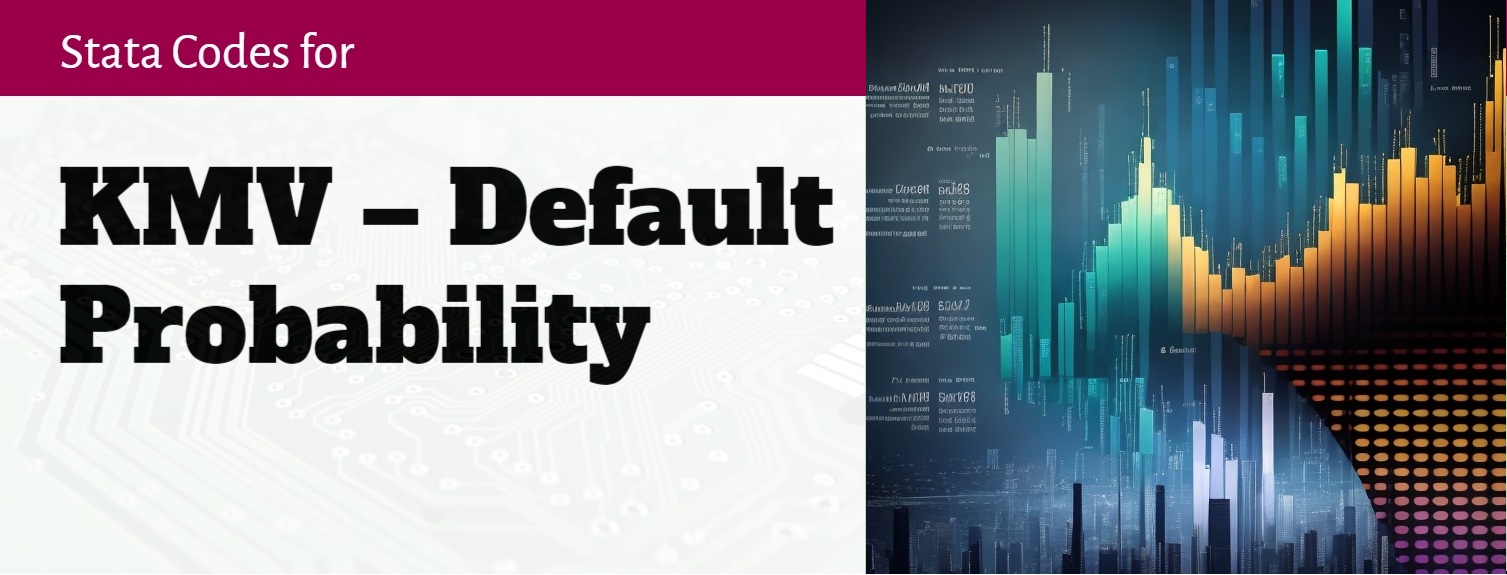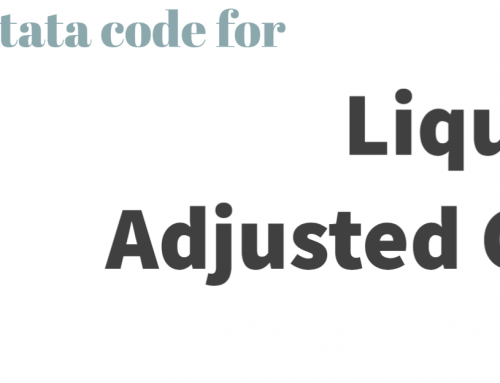Our Stata | Mata code offers a comprehensive implementation of the Merton distance to default or Merton DD model, following the iterative process employed by renowned researchers such as Crosbie and Bohn (2003), Vassalou and Xing (2004), and Bharath and Shumway (2008). By utilizing our code, you can easily apply the model using the following steps:
1.Generate log returns from stock prices.
2. Calculate the volatility for each stock in each year using daily stock returns, subsequently converting it into yearly volatility.
3. Utilize the stock volatility as a proxy for asset volatility in the initial iteration, employing a specific equation to infer the firm value.
Here, E represents the market value of the firm’s equity, F denotes the face value of the firm’s debt, r is the risk-free rate, and \mathcal{N}(.) represents the cumulative standard normal distribution function. Additionally, d_1 and d_2 are defined as follows:
4. Repeat step 3 for each observation while employing the volatility values of a particular firm in a given year. This iterative process generates daily firm values. It’s important to note that the root for the firm value in Equation 1 needs to be found, and we have set the iteration limit at 1000.
5. Once the implied firm values are generated, recalculate log returns based on these values.
6. Re-evaluate daily volatility from the log returns for each firm-year combination, and convert it back into yearly volatility.
7. Plug the new volatility values into Equation 1 to infer firm values.
8. Iterate this process (up to 500 times) until the new volatility value converges to the previous volatility.
9. After achieving convergence, employ the firm and volatility values from the last successful iteration to derive the probability of default using the following equation:
 Accuracy of the Code
Accuracy of the Code
We have rigorously tested the code with both real and dummy data, and it consistently produces the expected results, accurately matching the benchmarks created during the construction of the dummy data.
 Pricing
Pricing
The code is available for purchase at £139. We also offer a data processing service for £49 to help you prepare your data for use with the code. We can modify your data set and convert it to Stata format, or we can construct the required variables if needed.
 Pay Now
Pay Now
For further details and inquiries, please don’t hesitate to contact us at the following:

attaullah.shah@imsciences.edu.pk
Stata.Professor@gmail.com

Why should you buy the code?







 References
References
Bharath, S. T., & Shumway, T. (2008). Forecasting default with the Merton distance to default model. The Review of Financial Studies, 21(3), 1339-1369.
Crosbie, P., & Bohn, J. (2003). Modeling Default Risk: Modeling Methodology, Moody’s KMV Company. available at http:\\www.moodyskmv.com.
Merton, R. C. (1974). On the pricing of corporate debt: The risk structure of interest rates. The Journal of finance, 29(2), 449-470.
Vassalou, M., & Xing, Y. (2004). Default risk in equity returns. The journal of finance, 59(2), 831-868.





I have several questions regarding to the code.
1. is there any published paper using this code to estimate the Distance to default? Please list some of them.
2. Does the code estimate the naive distance to default or modified one?
3. What the input from WRDS I should access to estimate the US public firms?
Many thanks!
Eric
Eric Won
Thanks for stopping by and posting your comments. So far more than 5 clients have purchased and used this code. I am not aware of any paper using it. However, the code is reliable as it can be easily tested against benchmarks. One benchmark that I have used for testing this code is the example on Page 250 of the book PROFESSIONAL FINANCIAL COMPUTING USING EXCEL AND VBA
The code requires the following variables:
Daily share price (prc)
Shares outstanding (shout)
total liabilities
risk-free rate
Equity
Goodmorning, I have a question regardind the procedure.
The value of asset that is used to compute d1 and d2 before the first iteration (I mean the initial value), is the sum of equity value and liabilities? thanks in advance
Hello Simone
This page lists a paid resource. All questions are answered once the order is placed.